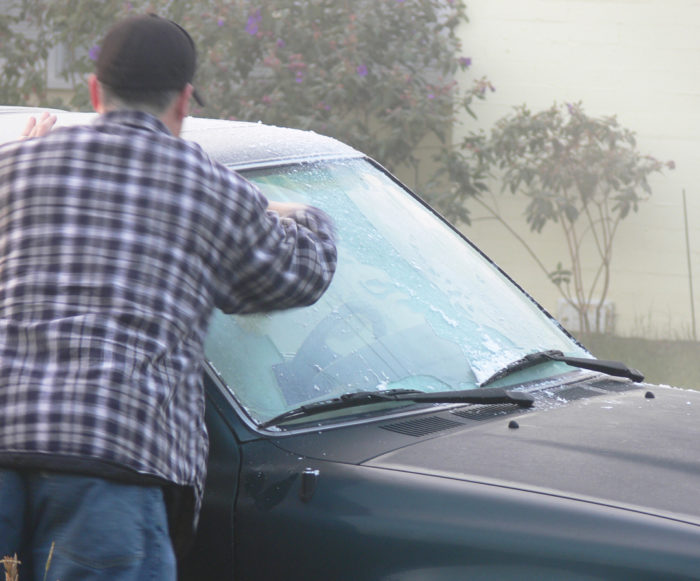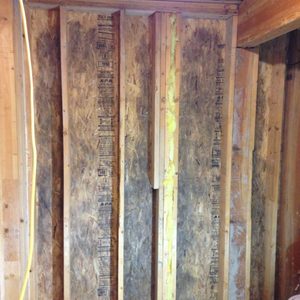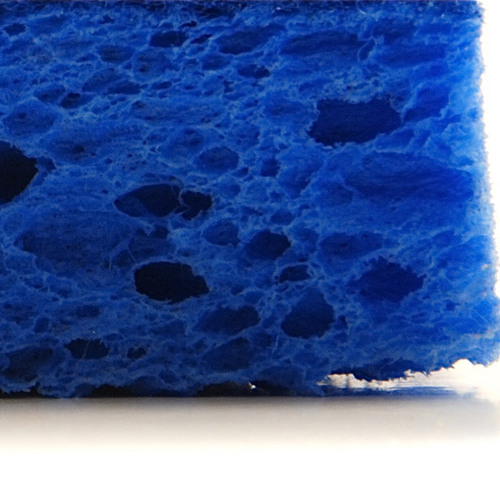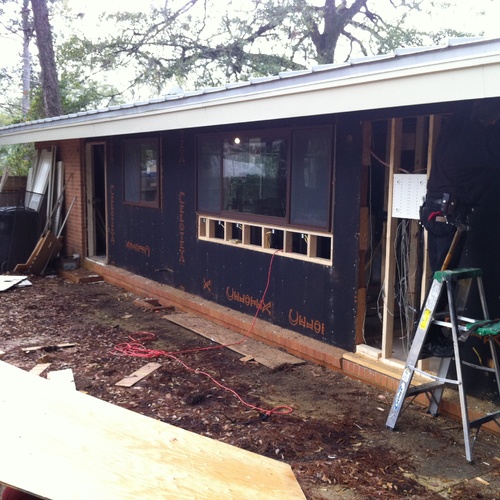
Image Credit: Jessica Merz - Flickr
A surprising number of people don’t understand the causes of condensation. If you ask a stranger on the sidewalk, “Does condensation happen when cold air encounters a warm surface, or when warm air encounters a cold surface?,” many people will shrug their shoulders.
Here’s an example of this type of confusion: When drivers see condensation on their windshield during the summer, they are often unsure of the best remedy. Should they turn on the heater or the air conditioner?
Let’s look at four different scenarios.
1. Water droplets or frost on the outside of your windshield in winter
This is the most common type of cold-weather condensation on a windshield.
Where did the moisture come from? The moisture came from the outdoor air.
What’s the cause? Due to night-sky radiation, the temperature of the windshield dropped below the dew point of the outdoor air.
What’s the solution? If all you have is dew, you can jump in the car and use the windshield wipers. If you have frost on your windshield, you either have to scrape the outside of the windshield, or let your engine idle for a while so that the engine coolant gets warm enough to provide heat through your defroster vents.
2. Water droplets or frost on the interior of your windshield in winter
This phenomenon only happens when all of the vehicle’s windows are closed. It occurs more rarely than exterior condensation.
Where did the moisture come from? The moisture came from the air inside the vehicle.
What’s the cause? This phenomenon happens when the interior of the vehicle is very damp (as might occur if the carpeting has been soaked by melted snow from the driver’s boots). At night, the outdoor temperature drops below the temperature of the air inside the…
Weekly Newsletter
Get building science and energy efficiency advice, plus special offers, in your inbox.

This article is only available to GBA Prime Members
Sign up for a free trial and get instant access to this article as well as GBA’s complete library of premium articles and construction details.
Start Free TrialAlready a member? Log in















13 Comments
Air Conditioner + Heat
There's a missing solution here for condensation on the inside of your window when it's humid out (and in your car). This usually manifests as such: you get into your car and turn everything on, and suddenty all of the windows fog up entirely. The solution is to turn on your A/C, turn up the heat, and turn the system to defrost. The A/C strips humidity from the air while the engine heats the air, so you push hot dry air at the windshield. This removes condensation and warms the windshield, preventing further condensation.
Response to John Ranson
I'm not sure whether you are talking about interior condensation or exterior condensation. In your scenario, is the weather hot or is the weather cold?
I'm 63 years old, but I've never experienced what you experienced: "You get into your car and turn everything on and suddenly all of the windows fog up entirely." Perhaps you are describing a humid car filled with 4 or 5 passengers on a cold day.
In any case, you're right: If you want to lower the indoor humidity of a house or a car, simultaneous operation of the air conditioner and the heater is the fastest way to lower the indoor humidity. That said, your suggested approach isn't possible in many cars. (Many cars have controls that force you to choose either heating or cooling but don't allow both functions to operate simultaneously.)
The trick you describe is often used by disaster recovery contractors attempting to dry out a flooded house. If the HVAC systems allows it, simultaneous operation of the heating system and the air conditioning system is a fast way to dry out a house.
You left one out
You left out the scenario in which the windows fog up while teenagers are parked in a remote location on Saturday night. (Related to #3, but without the rain.) I suppose the "solution" might depend on whether you are one of the teenagers or one of their parents.
Response to Reid Baldwin
Reid,
In your scenario, the condensation is a benefit, not a problem, at least from the teenagers' perspective.
what's happens in a garage
I remain a bit confused why frost doesn't occur in an unheated garage. If I park my car in a detached, unheated and VERY leaky garage, I never have frost on the windshield in the morning. With the open ventilation in the garage including a couple of windows open, I would think the air inside the garage must be very nearly the same as that outside the garage. Yet the conditions that produce frost on the windshield if the car were parked outside don't do the same inside the garage.
Response to Daniel Beideck
Daniel,
The answer is simple: parking in a garage stops night sky radiation.
You generally need a surface that is colder than the outdoor air temperature for condensation to form, and without night sky radiation, the windshield never gets cold enough to allow condensation.
For more information, see Night Sky Radiation.
reply to Martin
Martin,
I read the article on night sky radiation. I suspect the answer has something to do with that. However, I'm not sure it's the whole answer. The windshield will emit blackbody radiation, as do all objects, in a garage or outside. The IR photons from the windshield don't "know" or care if there is a roof above them. They will be emitted either way, and will therefore release energy and cool the windshield. If there is a roof above them, those photons will often be absorbed by the roof. the roof in turn will emit it's own blackbody radiation. Some of that will be absorbed by the windshield. Maybe that is enough to keep it warm enough to keep the frost at bay???
Another factor is the volume of air involved. Even though garages are often very leaky, airflow is still restricted. I don't have experience with carports. Do you know if a carport with a high ceiling will prevent frost on the windshield as effectively as a garage? A carport will block night sky radiation similar to a garage, but will have airflow pretty similar to the car parked outside.
Response to Daniel Beideck
Daniel,
Outer space is much, much colder than your garage ceiling.
space is 3K
Yes, the temperature of space is around 3 Kelvin on average, i.e. very cold. It's also miles away from a car windshield. I suspect the radiation from the garage (and carport?) ceiling are what keeps the windshield from getting frosty. If that's the case, the terminology of 'night sky radiation' is a little misleading since it's more a lack of nearby blackbody radiation that's creating the conditions that make the frost possible.
Soffit Frost Scenario?
Here's a particular scenario I'm trying to resolve related to this Blog topic. How likely is it for frost to be deposited/formed from outside air in a ventilated attic or soffit in Winnipeg during bitterly cold winter months?
In this case, the soffit in question is the extension of a flat roof (continuous sloped rigid insulation and mod-bit) and enclosed on all sides - air barrier between house and soffit appears to be good (but impossible to verify well with my blower door, infrared and theatrical fog tools due to finishes in place).
The soffit is finished with 1x5 cedar boards spaced around 3/8 inches apart over insect screen. Large amounts of frost is forming between board cracks, on roof sheathing in soffit, and on top of screen in soffit.
Everything screams air leakage from house to soffit as the culprit but I want to eliminate the possibility of hoar frost forming during evening night sky radiation or downward temperature swings....
Gio
Response to Gio Robson
Gio,
If we are talking about "bitterly cold winter months," we know that the weather can make your roof sheathing bitterly cold. So we have a condensing surface.
If the boards in question can get cold due to night sky radiation, the boards might get colder than the outdoor air (on certain nights). But if the boards have rigid foam above them, it's unlikely that the boards' heat will radiate to outer space. So the boards are probably at the same temperature as the outdoor air.
Under those circumstances, the small amount of moisture in the cold outdoor air won't be able to be deposited on the boards as frost. However, if there is a leak of indoor air, and that warmer indoor can can contact the cold boards, you've found your mechanism.
Reply to Martin
Thanks, Martin - that was also my feeling.
There is some modest insulation on the top of the soffit to direct water from the parapet part of the roof assembly.
That soffit space is also likely to be at least a few degrees warmer than outside temperatures as it is a buffered space, much like an attached garage or porch.
Therefore if the soffit/house air barrier was perfect, the absolute humidity in the soffit would be similar (or perhaps slightly higher) to the outside colder air, but the relative humidity would be lower, and the dew point might also be lower than the outside air. Is this correct?
Gio
Response to Gio Robson
Gio,
Lots of speculation going on. I guess if you really want to know the temperature profile inside your soffit area, you could install temperature monitoring equipment. I don't really know the answer -- but my gut tells me that significant frost or condensation would be a sign of an air leak and a path that allows indoor air to reach the cold roof sheathing.
Log in or become a member to post a comment.
Sign up Log in